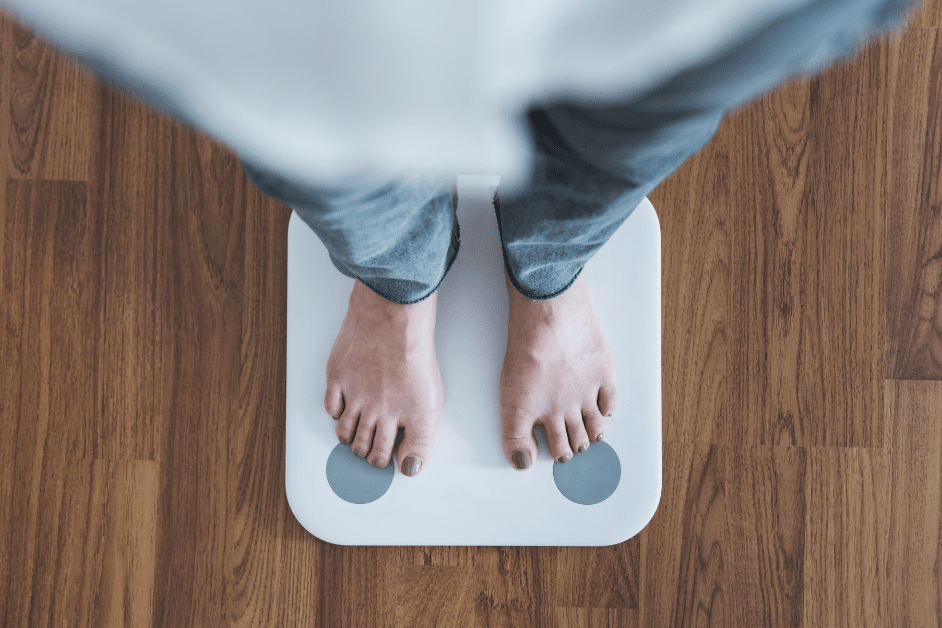More than 600,000 people have their gallbladder removed each year in the U.S.
That’s like if every single person in Las Vegas had their gallbladder removed!
Usually, the gallbladder is removed because of painful gallstones. It’s treated as a totally normal, safe procedure with no side effects.
But that’s just not true…
Your gallbladder is actually a crucial part of your digestive, detox, and hormonal systems.
And even if you haven’t had your gallbladder removed, gallbladder dysfunction is becoming more and more common, and can cause symptoms like:
- Digestive issues (pain, bloating, diarrhea)
- Fatigue
- Skin congestion (acne, rashes, eczema, etc.)
- Weight loss resistance
- Hormone imbalance (PCOS, estrogen dominance, etc)
- Fatty liver disease
- And more
Today, I want to explore the role of the gallbladder, common signs and symptoms of gallbladder dysfunction, and steps you can take to heal and optimize your gallbladder function. Learn about hormone imbalance after gallbladder removal.
What and Where Is The Gallbladder?
Your gallbladder is a small organ that sits underneath your liver. Your liver makes bile (the digestive liquid needed to break down and absorb fat) and the gallbladder stores it, concentrates it, and then releases it to the stomach on demand.
The gallbladder plays key roles not just in digestion, but also in detox and hormone balance, as bile is needed both for clearing toxins from the body and for the healthy production of hormones, as well as hormone removal and balance. For that reason, the gallbladder isn’t just a digestive organ – it’s also a hormone and detox organ.
In Chinese medicine, the gallbladder is also attributed with governing decision making and qualities like inspiration, action, and assertiveness (think of the saying “they have gall!”). A strong gallbladder is associated with a quick return to normal after a physical or emotional shock. On the other hand, a weak gallbladder is associated with timidity or hesitation, and problems making decisions or following through. Finally, the gallbladder is also seen as a pivot, a turning point for new decisions and stages of life.
What Bile Does
Although it’s not sexy, the bile created by the liver and then stored, concentrated, and secreted by the gallbladder is one of the most important secretions in your body. Bile consists of ~95% water, in which are dissolved bile salts, bilirubin phospholipid, and cholesterol, primarily.
Here are just some of the many roles of bile:
- Bile emulsifies fat, increasing fat absorption. Bile is an essential “degreaser” and “emulsifier” of dietary fats. Bile is also essential for the utilization of the fat-soluble vitamins A, D, E and K. Bile deficiency leads to vitamin deficiencies.
- Bile prepares nutrients for assimilation in the small intestine. Bile takes food that has been acidified in the stomach and alkalizes it, allowing it to be broken down and absorbed.
- Bile assists in detoxification. Bile contains the conjugated toxins – carcinogens, xenobiotic chemicals, pharmaceuticals, heavy metals like mercury, aluminium and lead, and deconjugated hormones – from the 2 phases of liver detoxification.
- Bile helps modulate the microbiome. It acts as an antimicrobial, keeping the balance of bacteria in check.
- Bile transports excess cholesterol out. In doing so, it prevents cholesterol levels from rising too high.
- Bile lubricates the intestines and plays a regulatory role in motility, allowing food to go through the digestive tract a lot easier and preventing constipation.
- Bile prevents the formation of gallstones by breaking down fats before crystallization, and also digests and dissolves gallstones, which are composed mostly of cholesterol and particles.
- Bile triggers the release of glutathione, which is considered the “master” antioxidant, and helps eliminate bilirubin.
- Bile breaks down fats, and as such, is essential for weight loss!
- Bile controls the rhythm of the gut – the circadian timing of your gut motility is controlled by the gallbladder. Changes in motility (the time it takes for food to move through the digestive system) can lead to issues like Small Intestine Bacterial Overgrowth (SIBO).
The Gallbladder, Bile, and PCOS
The gallbladder’s role in hormone balance deserves special attention, especially in relation to PCOS (Polycystic Ovarian Syndrome).
Dietary fat and bile (to absorb it) are both necessary for the production of hormones. Even more importantly – bile helps your body excrete excess and used hormones, like estrogen. In addition, estrogen dominance (either as a result of hormone imbalance or due to supplemental estrogen, like birth control pills) are known risk factors for sluggish bile (the precursor to gallstones) and gallstones themselves. This is believed to be because estrogen causes an increase in cholesterol levels in the bile, which can then thicken and form stones.
Interestingly, research has shown that in PCOS, bile acid levels are actually significantly elevated, and that high levels of bile acids correlated with higher levels of testosterone levels, meaning worse PCOS.
The exact mechanism is not yet known, but it is thought to be related to sluggish bile, which is more commonly seen in those with hormone imbalance and PCOS. The sluggish bile raises levels of bile acids in the blood. There, the bile acids act on the Farnesoid X receptor, which has hormonal actions throughout the body, and can lead to elevated testosterone.
In addition to increasing testosterone, high levels of bile acids can also contribute to insulin resistance, another major issue in PCOS.
Bile and Leaky Gut
Bile flow issues or lack of bile can also cause or worsen leaky gut (increased intestinal permeability).
While leaky gut is often attributed to toxins produced in the gut or pathogenic bacteria living there, insufficient bile is another major cause.
One role of bile is to bind with toxins and help them be safely excreted from the body. But if there is inadequate bile to bind with the toxins, they can damage the intestinal barrier, allowing toxins and undigested food into the bloodstream… creating “leaky gut.”
Leaky gut causes widespread, multi-system issues and may even be a major part of triggering autoimmune disease. It is common in IBS (Irritable Bowel Syndrome), ulcerative colitis, Crohn’s disease, Celiac disease, and more.
Signs of Gallbladder Dysfunction
The most common type of gallbladder dysfunction is the result of slow or sluggish bile. This can be a result of not enough water (remember, bile is 95% water!), but can also occur when bile is oversaturated with toxins. The sluggish bile is more like peanut butter than water, and is too thick to flow freely.
In addition, the removal of the gallbladder, as well as other conditions, can lead to reduced levels of bile salts in the bile and weakened bile.
Symptoms of sluggish or weak bile include:
- Abdominal tightness
- Bloating
- Difficulty digesting fats
- Diarrhea
- Constipation (fat can build up in the intestinal wall and cause slow movement in the digestive tract)
- Trapped gas
- Bad-smelling gas
- Stomach cramps
- Gallstones
- Fatigue and malaise
- Fatty stool that floats or is light in color or grayish white
- Increase in allergies, chemical sensitivities, or food intolerances
- worsening PMS/Estrogen dominance…
- Hormone imbalances like PCOS
- Heartburn
- Erratic bowel movements
- Weight loss
- Signs of Vitamin A deficiency: Dry eyes, night blindness, red or white acne-like bumps (on your cheeks, arms, thighs, and buttocks), and dry skin
Why Are So Many Gallbladders Removed?
Typically, the gallbladder is removed due to gallstones. Gallstones are crystallized masses of bile and cholesterol. Around 20% of females over the age of 40 have gallstones.
When gallstones become stuck in the duct of the gallbladder, they can cause pain and inflammation called cholecystitis. The most common treatment for gallstones is simply having the gallbladder removed. The surgeon then ‘“reroutes” the bile to go straight from the liver to the stomach.
Risk factors for gallstones include:
- Alcohol
- Excess reproductive hormones from supplementation or steroids (most commonly estrogen dominance)
- Oral contraceptive pills (birth control pills)
- High Endotoxin load causing sludgy bile
- Hereditary disorders like Gilbert’s syndrome
- Thyroid issues or thyroid supplementation with T4
- Hepatitis
- Pregnancy
However, without the gallbladder, bile isn’t concentrated and lacks adequate bile salts – leading to the problems discussed above. That’s why gallbladder removal isn’t something you should just jump into.
Testing For Gallbladder Issues
If you suspect gallbladder issues, various tests can help pinpoint the problem:
- Blood test for cholesterol levels – if a person’s cholesterol production is low, bile production is also likely to be low. I look for cholesterol levels lower than 170.
- Digestive stool analysis – can help identify undigested fat in stool, which is caused by low bile availability.
- Bloodwork – to look for changes in serum bilirubin, alkaline phosphatase, serum glutamic oxaloacetic transaminase (SGOT), lactate dehydrogenase (LDH), aspartate aminotransferase (AST) and alanine transaminase (ALT). In early stages of gallbladder dysfunction, these levels might not change. However, functional medicine practitioners like me also use a more narrow interpretation of what normal is.
- A HIDA scan – this imaging test uses a radioactive material to measure the emptying function of the gallbladder, and can help diagnose:
- Gallbladder inflammation (cholecystitis)
- Gallstones, which can’t be seen, but can contribute to reduced flow or blockage to less bile flow if blocking
- Bile duct obstruction
- Congenital abnormalities in the bile ducts, such as biliary atresia
With my own patients, I use the ION panel by Genova (Organic Acids section) to evaluate the various pathways of liver detox and glutathione/antioxidant capacity. These results often illuminate when the liver or gallbladder are overburdened long before we see markers of pathology like elevated liver enzymes in labs. They also give more detail about exactly how the liver or gallbladder are compromised and can best be supported, in each individual.
Support for a Healthy Gallbladder
If you’re having signs of any gallbladder issues, step one is to get tested and find out exactly what’s going on.
In addition, here are some of the steps I turn to again and again with my patients:
- Switching out hormonal birth control (pill, patch, ring, etc.) for non-hormonal to reduce estrogen levels
- Supplements that support healthy gallbladder function
- Digestive enzymes and bitters
- Dietary changes: avoid excessive fried, fatty and greasy food and increase leafy greens
- Cut out alcohol
- Exercise regularly
In addition, addressing the emotional side of gallbladder health can be important. Try to express your emotion freely (journaling is an easy way to get started), address your past traumas (get help from a professional), and forgive.
And if you’ve already had your gallbladder removed? I can help you with strategies to support your digestion and hormones, even without your GB!
Want to learn more? Book a free 15 minute consult with my team now. It’s a zero-obligation opportunity to get a functional medicine opinion on your gallbladder health (and even if removal is something you should consider!).
P.S. Gallbladder issues are more common in women and those on hormones (like HRT or birth control). But if you catch gallbladder issues early on, you can avoid ever developing painful stones. Book a free 15 minute consult now.
At the Reverse-Age Method, we believe in a holistic approach to perimenopause and beyond, that addresses the root causes of your symptoms (like insomnia, hot flashes, night sweats, erratic periods, fatigue, skin aging, weight gain, and brain fog)– to also slow the pace that your cells are aging. Whether it’s improving gut health, optimizing detox function, enhancing mitochondrial function, or building muscle mass, our comprehensive program has got you covered.
If you’re new here, be sure to check out our Blog Page for more insights and tips on how to thrive during perimenopause. Our blog is packed with practical advice, success stories, and the latest research to help you on your journey.
For more updates and community support, follow us on social media:
You May Also Like...
Adrenal Fatigue/HPA-D Part 2: How Adrenal Fatigue Feels
This is Part 2 of an 8-part series about Adrenal Fatigue (HPA-Axis Dysregulation), how it relates to your health,…
Weight Gain in your 40s
You’re eating the same as you always have, still getting the same amount of exercise… but your pants are suddenly…
Whether you’re looking for help with your gut, your hormones, or both, our team of practitioners work together to treat the WHOLE you – guiding you to a healthier mind, body, and spirit day by day.



